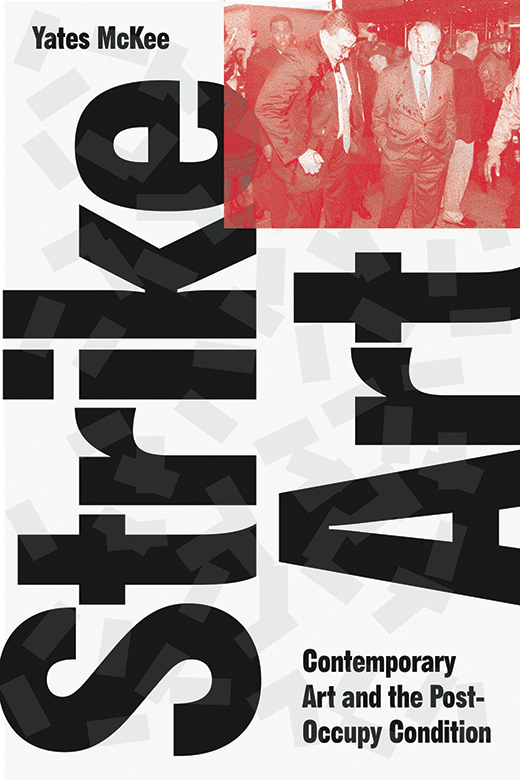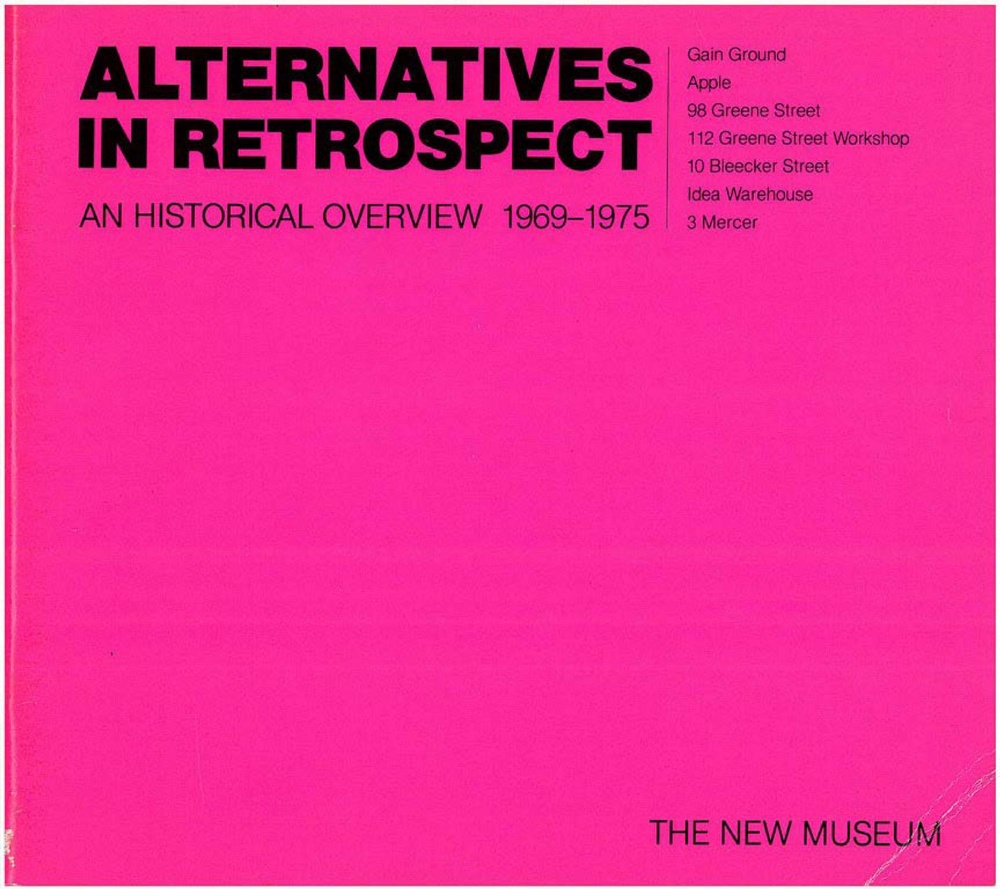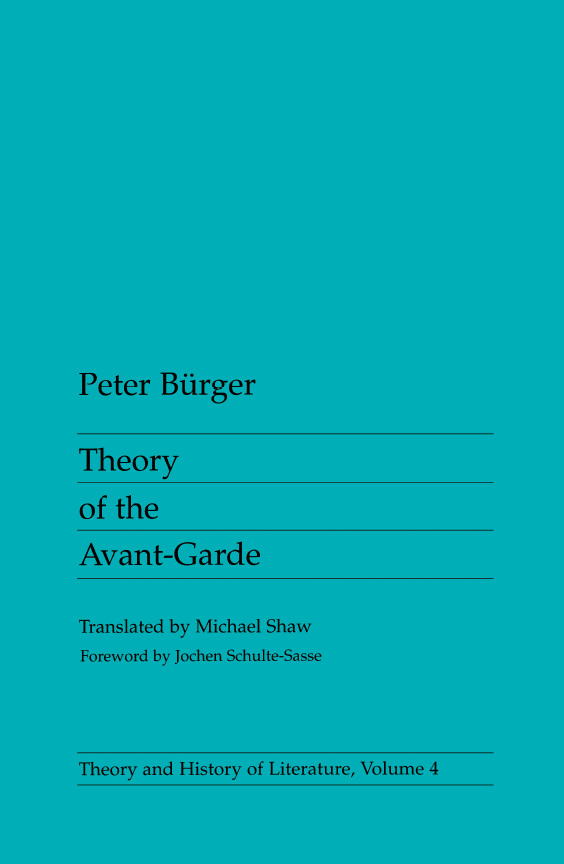Yates McKee: Strike Art: Contemporary Art and the Post-Occupy Condition (2016)
Filed under book | Tags: · aesthetics, anarchism, art, art system, black lives matter, commons, contemporary art, debt, direct action, gentrification, housing, new york, occupy movement, precarity, protest, situationists, social movements, spectacle

“The collision of activism and contemporary art, from the Seattle protests to Occupy and beyond
What is the relation of art to the practice of radical politics today? Strike Art explores this question through the historical lens of Occupy, an event that had artists at its core. Precarious, indebted, and radicalized, artists redirected their creativity from servicing the artworld into an expanded field of organizing in order to construct of a new—if internally fraught—political imaginary set off against the common enemy of the 1%. In the process, they called the bluff of a contemporary art system torn between ideals of radical critique, on the one hand, and an increasing proximity to Wall Street on the other—oftentimes directly targeting major art institutions themselves as sites of action.
Tracking the work of groups including MTL, Not an Alternative, the Illuminator, the Rolling Jubilee, and G.U.L.F, Strike Art shows how Occupy ushered in a new era of artistically-oriented direct action that continues to ramify far beyond the initial act of occupation itself into ongoing struggles surrounding labor, debt, and climate justice, concluding with a consideration of the overlaps between such work and the aesthetic practices of the Black Lives Matter movement.
Art after Occupy, McKee suggests, contains great potentials of imagination and action for a renewed left project that are still only beginning to ripen, at once shaking up and taking flight from the art system as we know it.”
Publisher Verso Books, London and New York, Feb 2016
ISBN 9781784781880, 1784781886
296 pages
Reviews: Marc James Léger (Marx & Philosophy, 2016), Philipp Kleinmichel (Radical Philosophy, 2018), Paloma Checa-Gismero (Field, 2016), John Ayscough (Visual Culture in Britain, 2017), Kristin Gecan (Chicago Review, 2016).
Discussion: Gregory Sholette, a.o. (e-flux supercommunity, 2016).
Book launch
EPUB (6 MB)
Comment (0)Alternatives in Retrospect: An Historical Overview 1969-1975 (1981)
Filed under catalogue | Tags: · 1970s, alternative culture, art history, art system, new york

“An examination of the activities and influence of seven ‘alternative spaces’ active in New York City from the late-1960s to mid-1970s, including Gain Ground, Apple, 98 Green Street, 112 Green Street Workshop, 10 Bleecker Street, Idea Warehouse, and 3 Mercer. Most of them received little outside or institutional funding and all reflect the changing definition of “alternative space” over the decade. Preface by Marcia Tucker, with introduction by Jacki Apple, and essay by Mary Delahoyd. Includes Directors’ and artists’ statements. Published on occasion of the exhibition Alternatives in Retrospect: An Historical Overview 1969-1975. ”
Publisher New Museum of Contemporary Art, New York, 1981
LCCN 8181185
52 pages
Peter Bürger: Theory of the Avant-Garde (1974–) [DE, EN, ES, PT, CZ]
Filed under book | Tags: · 1920s, aesthetics, art, art criticism, art history, art system, art theory, avant-garde, collage, literary theory, literature, modernism

“In this volume, Peter Bürger formulates a theory of the ‘institution of art’. He argues that the social status of literature and art cannot be explained by making simple, direct links between the contents of individual works and social history. Rather, he holds, it is the social status of art, its function and prestige in society, that provides the connection between the individual art work and history. Bürger’s concept of the institution of art establishes a framework within which a work of art is both produced and received.
The French and German literary and visual avant-garde of the 1920s provides the test of Bürger’s theory. Focusing on the role of the artistic manifesto and, particularly, on the collage as an art form, he shows how avant-garde movements questioned the autonomous, self-referential status of art in bourgeois society and thus represented a radical break with the aestheticism of high modernism. Bürger attacks metaphysical aesthetics and argues instead for a materialistic aesthetic theory for today, one that is rooted in the reality of the social sphere. His theory calls into question any conventional concept of art derived from Romantic notions of organic unity.
Theory of the Avant-Garde provoked such discussion in Germany that its publisher, Suhrkamp Verlag, issued a book of responses that was more than twice the size of Bürger’s own book.” (from the back cover)
German edition
Publisher Suhrkamp, Frankfurt am Main, 1974
Second edition, 1993
147 pages
English edition
Translated by Michael Shaw
Foreword by Jochen Schulte-Sasse
Publisher University of Minnesota Press, 1984
Theory of History and Literature series, 4
ISBN 0816610673
134 pages
Reviews: Benjamin Buchloh (Art in America, 1984), Leah Ulansey (MLN, 1984), Daglind Sonolet (Telos, 1984), Michael T. Jones (German Quarterly, 1986), Martin Vrba (A2, 2016, CZ).
Publisher (DE)
Publisher (EN)
Publisher (CZ)
Theorie der Avantgarde (German, 2nd ed., 1974/1993, updated on 2020-10-13)
Theory of the Avant-Garde (English, 1984, assembled from various sources, no OCR, updated to full version on 2014-5-12 via Charles, updated to OCR version on 2016-1-23 via a2, 12 MB)
Teoría de la vanguardia (Spanish, trans. Jorge García, 1987), 3rd edition (2000, 51 MB)
Teoria da vanguarda (Portuguese, trans. Ernesto Sampaio, 1993)
Teorie avantgardy (Czech, trans. Václav Magid, 2015, added on 2020-4-5)
See also Bürger’s essay Avant-Garde and Neo-Avant-Garde: An Attempt to Answer Certain Critics of Theory of the Avant-Garde, 2010.
Comments (4)
